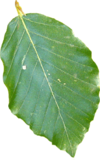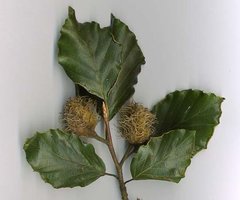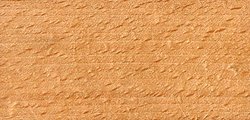European Beech
|
|
| European Beech Conservation status: Secure | ||||||||||||||
|---|---|---|---|---|---|---|---|---|---|---|---|---|---|---|
| Missing image Buchenwald_1.jpg European Beech forest | ||||||||||||||
| Scientific classification | ||||||||||||||
|
The European Beech or Common Beech (Fagus sylvatica) is a deciduous tree belonging to the beech family Fagaceae. The natural range extends from southern Sweden to northern Italy, west to France and northern Portugal, and east to northwest Turkey, where it intergrades with the Oriental Beech (F. orientalis), which replaces it further east. In the Balkans, it shows some hybridisation with Oriental Beech; these hybrid trees are named Fagus x taurica. In the southern part of its range around the Mediterranean, it is restricted to mountain forests, at 600-1,800 m altitude. Although often regarded as native in southern England, recent evidence has shown that it did not arrive in England until about 4,000 BC, or 2,000 years after the English Channel formed after the ice ages; it was almost certainly an early introduction by Stone age man, who used the nuts for food.
It is a large tree, capable of reaching heights of up to 48 m tall and 3m trunk diameter, though more typically 25-35 m tall and up to 1.5 m trunk diameter. It has a typical lifespan of 150 to 200 years, though sometimes up to 300 years. The appearance varies according to its habitat; in forest conditions, it tends to have a long, slender light-gray trunk with a narrow crown and erect branches, in isolation with good side light the trunk is short with a large and widely spreading crown with very long branches.
The leaves are alternate, simple, and entire or with a slightly crenate margin, 5-10 cm long and 3-7 cm broad, with 6-7 veins on each side of the leaf (7-10 veins in Fagus orientalis). When crenate, there is one point at each vein tip, never any points between the veins. The buds are long and slender, 15-30 mm long and 2-3 mm thick, but thicker (to 4-5 mm) where the buds include flower buds.
The European Beech starts to flower when it is between 30-80 years old. The flowers are small catkins which appear shortly after the leaves in spring. The seeds are small triangular nuts 15-20 mm long and 7-10 mm wide at the base; there are two nuts in each cupule, maturing in the autumn 5-6 months after pollination. Flower and seed production is particularly abundant in years following a hot, sunny and dry summer, though rarely for two years in a row. The nuts are an important food for birds, rodents and in the past also people, although they are no longer eaten by man. Slightly toxic to man if eaten in large quantities due to the tannins they contain, the nuts were nonetheless pressed to obtain an oil in 19th century England that was used for cooking and in lamps. They were also ground to make flour, which could be eaten after the tannins were leached out by soaking.
| Contents |
Habitat
Climate and temperatures vary, though humidity needs to be constant. Little is required of the soil so long as it is well drained. Though not demanding of its soil type, the European Beech has several significant requirements: a humid atmosphere (precipitation well distributed throughout the year and frequent fogs) and well drained soil (it can not handle excessive stagnant water). It prefers moderately fertile ground, calcified or lightly acidic, therefore it is found more often on the side of a hill than at the bottom of a clayey basin. It tolerates rigorous winter cold, but is sensitive to spring frost.
A beech forest is very dark and few species of plant are able to survive there, where the sun barely reaches the ground. Young beeches prefer some shade and may grow poorly in full sunlight. In a clear-cut forest a European Beech will germinate and then die of excessive dryness. Under oaks with sparse leaf cover it will quickly surpass them in height and, due to the beech's dense foliage, the oaks will die from lack of sunlight. Foresters may assure the oaks' survival by cutting young beeches with a billhook 10 cm off the ground, which can produce magnificent bonsai.
The root system is shallow, even superficial, with large roots spreading out in all directions. The role of the mycorrhizae in the growth of the European Beech is important. Without mycorrhizae, it often does not develop well. The mycorrhizae provide chemical protection of the roots against bacteria and enhanced uptake of mineral nutrients from the soil. The following fungi form mycorrhizae with European Beech: Porcini, Milky cap, Amanita, Cantharellus, and Hebeloma.
One of the most beautiful European Beech forests is found in Soigne, Belgium. It is a dominant tree species in France and constitutes about 10% of French forests.
Phenology
Spring leaf budding by the European Beech is triggered by a combination of day length and temperature. Bud break each year is from the middle of April to the beginning of May, often with remarkable precision (within a few days). It is more precise in the north of its range than the south, and at 600 m than at sea level.
The European Beech invests significantly in summer and autumn for the following spring. Conditions in summer, particularly good rainfall, determine the number of leaves included in the buds. In autumn, the tree builds the reserves that will sustain it into spring. Given good conditions, a bud can produce a shoot with up to ten or more leaves. The terminal bud emits a hormonal substance in the spring that halts the development of additional buds. This tendency, though very strong at the beginning of their existence, becomes weaker in older trees.
It is only after the budding that root growth of the year begins. The first roots to appear are very thin (with a diameter of less than 0.5 mm). Later, after a wave of above ground growth, thicker roots grow in a steady fashion.
Uses
Missing image Img_fagus_sylvatica_atropurpurea_1890.jpg Fagus sylvatica 'Atropurpurea' (Purple European Beech) |
European Beech is a very popular ornamental tree in parks and large gardens, not only in Europe, but also in North America and New Zealand. There are a large number of ornamental cultivars of European Beech made by horticultural selection, including:
- Copper Beech or Purple Beech (Fagus sylvatica Purpurea Group) - leaves purple
- Fern-leaf Beech (Fagus sylvatica Heterophylla Group) - leaves deeply serrated to thread-like
- Dwarf Beech (Fagus sylvatica Tortuosa Group) - distinctive twisted trunk and branches
- Weeping Beech (Fagus sylvatica Pendula Group) - branches pendulous
- Dawyck Beech (Fagus sylvatica 'Dawyck') - fastigiate growth
- Golden Beech (Fagus sylvatica 'Zlatia') - leaves golden in spring
The wood of the European Beech is used in the manufacture of numerous objects and implements. Its fine and short grain makes it an easy wood to work with, easy to soak, dye (except its heartwood), varnish and glue. Steaming makes the wood even easier to machine. It has an excellent finish and is resistant to compression and splitting. Milling is sometimes difficult due to cracking and it is stiff when flexed. It is particularly well suited for minor carpentry, particularly furniture. From chairs to parquetry (flooring) and staircases, the European Beech can do almost anything other than heavy structural support, so long as it is not left outdoors. The wood of the European Beech rots easily if it is not protected by a tar based on a distillate of its own bark (as used in railway sleepers). It is better for paper pulp than many other broadleaved trees though is only sometimes used for this.
External links
de:Rotbuche es:Fagus sylvatica fr:Hêtre nl:Beuk sv:Bok (träd)



